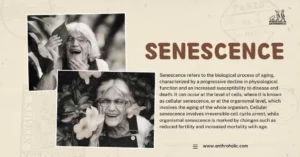AI Answer Evaluation Platform Live Now. Try Free Answer Evaluation Now
Non-Verbal Communication
Communication is an intricate tapestry weaved from both verbal and non-verbal cues. Non-verbal communication, a crucial part of this complex system, encompasses body movements, facial expressions, gestures, and even spatial distances.

Defining Non-Verbal Communication
Non-verbal communication refers to the conveyance of information and emotions without the use of spoken words [1]. It includes:
- Kinesics: Body movements, facial expressions, and eye contact
- Haptics: Touch and physical contact
- Proxemics: Spatial distances and territoriality
- Chronemics: Perception and use of time
- Paralanguage: Voice variations, pitch, and volume
The Importance of Non-Verbal Communication in Anthropological Research
Anthropology, as a discipline, focuses on human societies and cultures. Non-verbal communication has been found to be a rich source of data for anthropologists, offering insights into various aspects such as [2]:
- Cultural Differences: Non-verbal cues often differ across cultures. For instance, the thumbs-up gesture denotes approval in Western cultures but can be offensive in some Middle Eastern countries [3]. These variations underscore cultural nuances.
- Social Hierarchies: Non-verbal cues like space occupation can indicate social status. Higher-status individuals often command more space [4].
- Relationship Dynamics: Anthropologists also use non-verbal cues to understand relationship dynamics. For example, frequency of touch may indicate closeness or comfort level between individuals [5].
- Lie Detection: Inconsistencies between verbal and non-verbal communication can suggest deception, aiding in lie detection during ethnographic studies [6].
Case Studies in Non-Verbal Communication
The Pacific Islanders’ Usage of Silence
Silence, an aspect of non-verbal communication under chronemics, is often overlooked but can be highly meaningful. For instance, among Pacific Islanders, silence signifies respect and thoughtfulness, and it’s a crucial part of their communication practices.
| Pacific Islanders | |
|---|---|
| Silence signifies | Respect and thoughtfulness |
| Role in Communication | Significant |
| Studied under | Chronemics |
The Japanese Culture of Bowing
Japanese culture utilizes haptics and kinesics extensively, particularly through the act of bowing. The depth, duration, and timing of a bow signify different levels of respect or apology, illustrating the complexity of non-verbal communication in Japanese culture.
| Japanese Culture | |
|---|---|
| Bowing signifies | Respect and apology |
| Role in Communication | Extensive |
| Studied under | Haptics and Kinesics |
Role of Non-Verbal Communication in Anthropological Methods
Two primary methodologies employed in anthropological research, participant observation, and ethnographic interviews, depend significantly on non-verbal cues.
Participant Observation
Anthropologists deeply immerse themselves within a community and keenly observe its practices, relationships, and interactions. In this method, non-verbal cues offer insights into social relations and cultural norms. The anthropologist needs to be adept at interpreting these cues to comprehend the context accurately.
| Participant Observation | |
|---|---|
| Non-verbal cues | Provide insights into social relations and cultural norms |
| Role in the method | Essential for correct interpretation of the observed behavior |
Ethnographic Interviews
In ethnographic interviews, non-verbal cues can provide crucial information about the emotional state, truthfulness, and cultural customs of the interviewees. For instance, evasion of eye contact may suggest discomfort or untruthfulness in some cultures, but it might be a sign of respect in others.
| Ethnographic Interviews | |
|---|---|
| Non-verbal cues | Provide clues about emotional states, truthfulness, and cultural norms |
| Role in the method | Significant for interpreting the responses correctly |
Overcoming Challenges in Studying Non-Verbal Communication
Despite its importance, studying non-verbal communication presents challenges such as:
- Ambiguity: Non-verbal cues can be vague and open to interpretation, potentially leading to misunderstandings.
- Culture-Specific Interpretations: Non-verbal cues often vary across cultures, necessitating careful contextual interpretation.
- Influence of Personal Biases: An anthropologist’s personal bias can affect the interpretation of non-verbal cues, leading to inaccurate conclusions.
Overcoming these challenges requires the anthropologist to be culturally sensitive, adaptable, and open-minded.
Non-Verbal Communication and Future Anthropological Research
The potential of non-verbal communication as a research tool in anthropology remains vast and largely untapped. With advancements in AI and machine learning, future research could leverage these technologies to decode complex non-verbal cues, facilitating a deeper understanding of diverse cultures.
Conclusion
From the cultural silence of Pacific Islanders to the respectful bows of the Japanese, non-verbal communication enriches our understanding of diverse cultures. Its study, although challenging, is instrumental in anthropological research, offering deep insights into societal norms and cultural practices. As technology continues to evolve, its incorporation into the field promises to make decoding non-verbal cues more accurate and accessible, propelling anthropology into new realms of human understanding.
References
[1] Birdwhistell, R. L. (1970). Kinesics and Context: Essays on Body Motion Communication. University of Pennsylvania Press.
[2] Hall, E. T. (1966). The Hidden Dimension. Anchor Books.
[3] Argyle, M. (1975). Bodily Communication. International Universities Press.
[4] Henley, N. M. (1977). Body politics: Power, sex, and nonverbal communication. Prentice Hall.
[5] Jourard, S. M. (1966). Some Psychological Aspects of Touch. The Journal of Social Psychology.
[6] Vrij, A. (2000). Detecting Lies and Deceit: The Psychology of Lying and the Implications for Professional Practice. Wiley.




